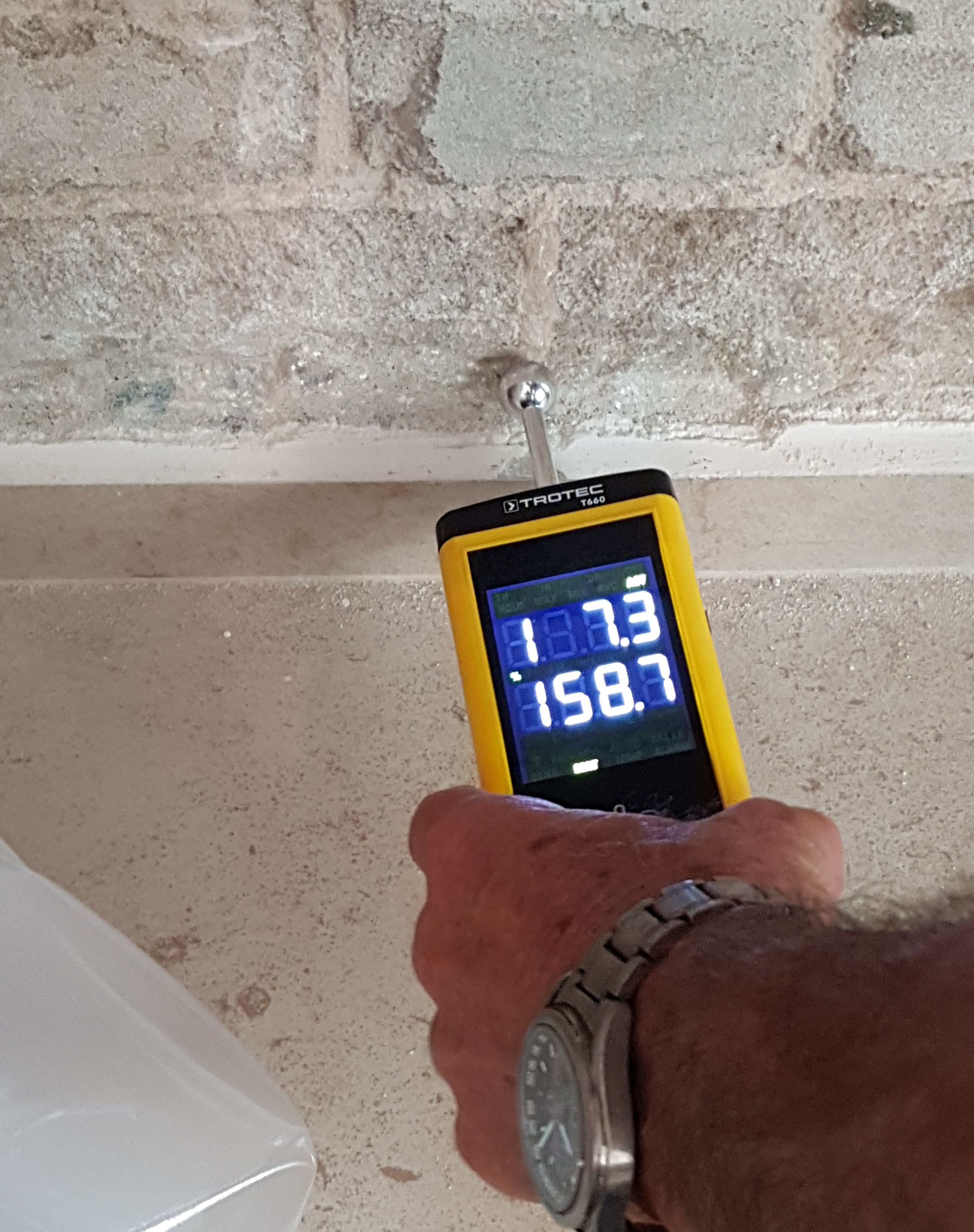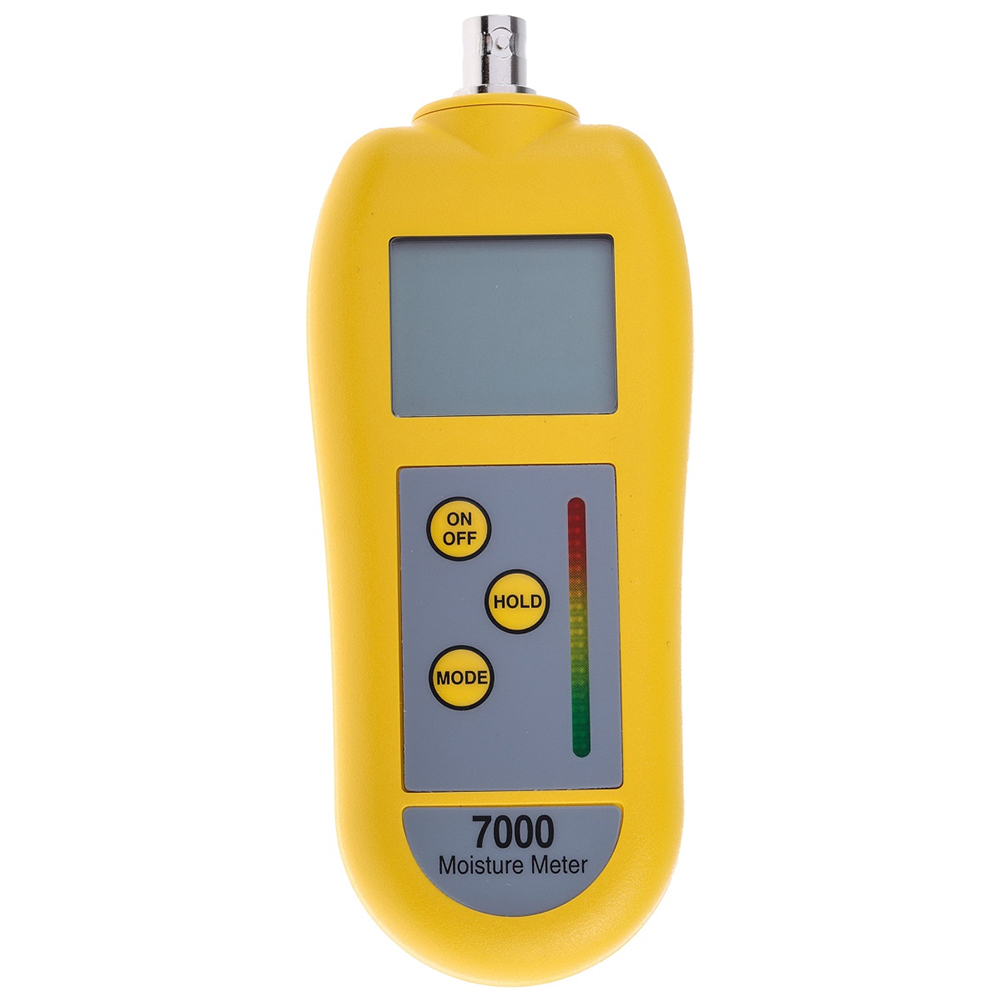Comprehending the Relevance of a Moisture Meter in Stopping Mold and Water Damages in your house
In the world of home maintenance, the presence of moisture can typically be a quiet yet powerful enemy, qualified of creating pervasive mold and mildew development and perilous water damages if left unattended. Amidst the tranquil ambiance of a home, concealed dampness problems can brew under the surface area, presenting a risk to both residential or commercial property and health and wellness. Outfitted with the right tools and understanding, homeowners can proactively battle these possible threats. Comprehending the relevance of a moisture meter in this fight is not simply an alternative however a calculated requirement.
Value of Moisture Discovery
Effective moisture discovery techniques are important for securing homes and preventing prospective mold development and water damage. Dampness can permeate right into numerous building materials, bring about architectural issues and health and wellness risks. By using a dampness meter, homeowner can proactively recognize locations susceptible to excess wetness, permitting prompt intervention and reduction techniques.
Moisture meters provide exact analyses of dampness degrees in different materials such as wood, drywall, and concrete. This data aids in pinpointing areas of problem, also in surprise or hard-to-reach places. Early detection of dampness build-up makes it possible for timely repair services or adjustments to stop additional damage.

Exactly How Moisture Meters Work
Wetness meters play a critical duty in the proactive identification of excess dampness, helping in the avoidance of potential mold and mildew development and water damage by supplying precise readings of moisture degrees in numerous building products. These tools work based on different principles, depending upon their type. Moisture Meter. Pin-type wetness meters, as an example, have 2 pins that permeate the material to determine the electric resistance in between them. When moisture exists, it improves the material's conductivity, leading to a reduced resistance analysis. Pinless wetness meters, on the various other hand, usage electro-magnetic sensing units to check the material without causing damages. These sensors produce electro-magnetic signals that pass through the material and gauge the dielectric homes, suggesting moisture content. Some advanced moisture meters pin both integrate and pinless technologies for comprehensive moisture detection. Comprehending exactly how moisture meters function is vital for precise and timely dampness level evaluations, enabling efficient safety nets against mold and mildew and water damages.
Detecting Early Caution Indicators
Upon first assessment of a home, recognizing subtle signs of excess dampness ends up being vital in the very early discovery of prospective mold and mildew development and water damage. Water spots can indicate leakages or infiltration, while peeling paint or wallpaper might be an outcome of wetness jeopardizing the bond of these materials to the surface area. Additionally, a boost in allergic reaction signs or respiratory system concerns among occupants might suggest the visibility of mold due to excess wetness.
Avoiding Mold Growth
Identifying early warning indicators of excess dampness within a residential or commercial property not just enables prompt discovery of possible mold development and water damages however likewise serves as a proactive step in stopping the proliferation of mold and mildew. To efficiently stop mold development, it is crucial to deal with any kind of resources of moisture promptly. This can include repairing leakages in pipelines, roofs, or home windows, making sure proper ventilation in wet locations like restrooms and kitchens, and making use of dehumidifiers in high-humidity areas. Frequently inspecting and maintaining the residential property's plumbing, roofing system, and rain gutters can likewise assist in preventing water invasion that might cause mold and mildew growth.
In addition to dealing with moisture resources, keeping interior humidity degrees listed below 60% can significantly hinder mold and mildew development. Proper air flow, ample insulation, and making use of ac system or followers can aid control interior moisture degrees. Keeping track of wetness levels in areas vulnerable to moisture, such as cellars and creep areas, utilizing a wetness meter can also aid in very early discovery of raised dampness degrees and possible mold and mildew development. By taking proactive actions to stop excess dampness and mold growth, property owners can protect their property and indoor air quality.
Advantages of Routine Surveillance
Routine surveillance of wetness levels in a property can play a crucial function in preserving a healthy and balanced interior setting and stopping potential mold and mildew and water damage. By regularly inspecting wetness levels, Go Here house owners can find any concerns without delay and take essential actions to avoid mold growth and water damages. One of the vital benefits of routine tracking is early discovery. By determining and resolving high moisture levels beforehand, homeowners can step in prior to mold and mildew has the opportunity to spread and develop. This positive method can conserve both time and cash over time by stopping extensive mold and mildew remediation and repair service expenses.
Additionally, routine surveillance permits home owners to track patterns and fads in moisture levels in time. By establishing a baseline and monitoring modifications, individuals can identify any locations of worry or prospective susceptabilities in the building's structure. This data-driven approach enables targeted interventions and upkeep initiatives to deal with underlying issues before they rise into more significant troubles. Ultimately, the consistent surveillance of moisture levels empowers house owners to shield their home, protect their health, and protect the integrity of their interior environment.

Final Thought

By utilizing a moisture meter, building proprietors can proactively determine locations susceptible to excess moisture, enabling Look At This for prompt intervention and reduction methods.

Keeping track of wetness levels in areas vulnerable to wetness, such as cellars and creep areas, utilizing a dampness meter can additionally assist in very early discovery of elevated wetness levels and prospective mold development. (Moisture Meter)